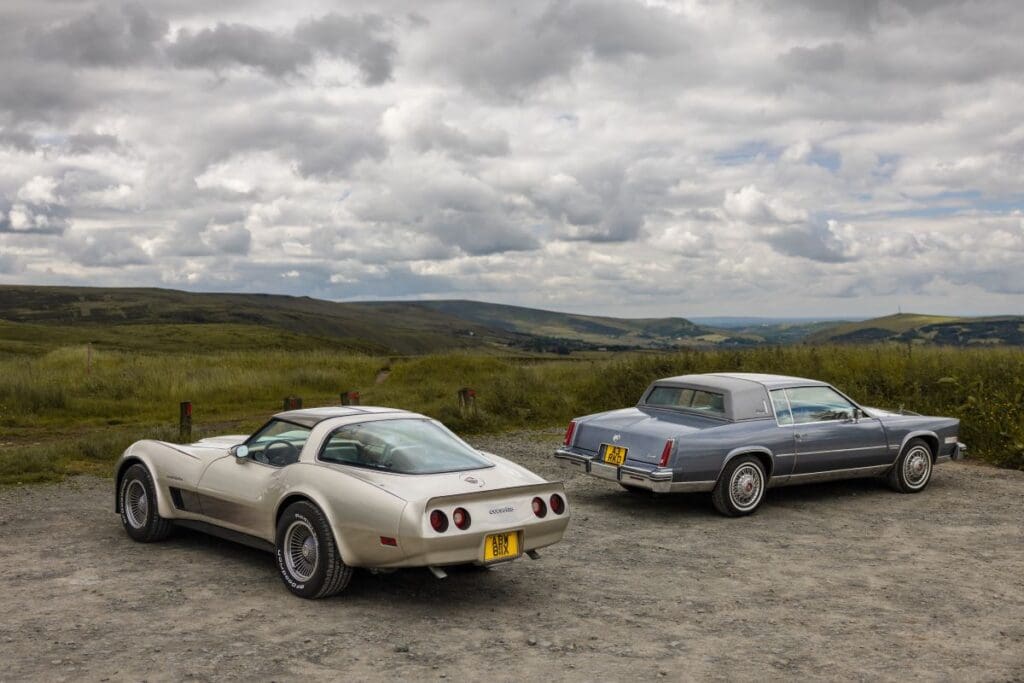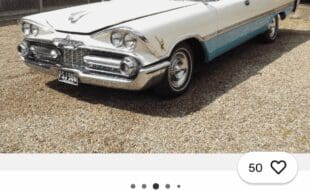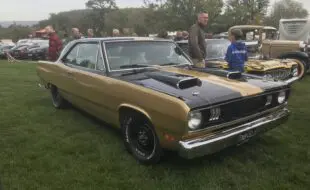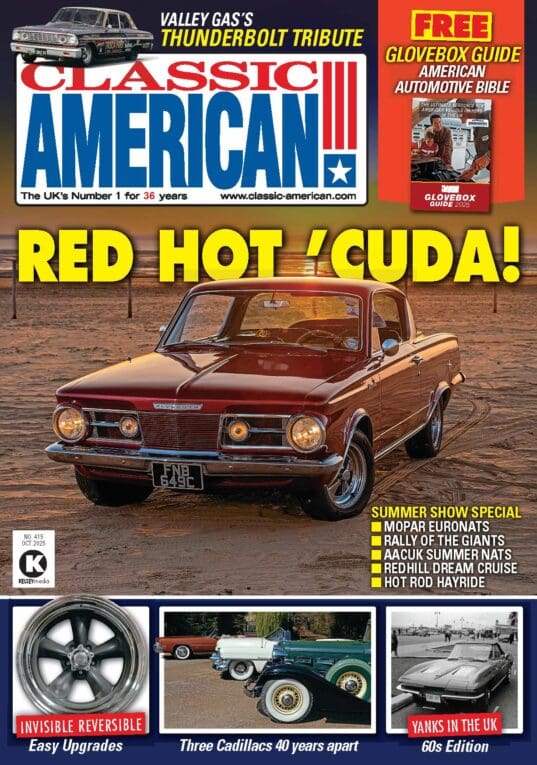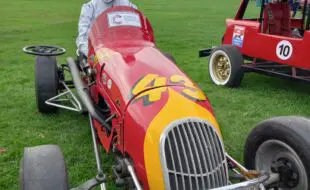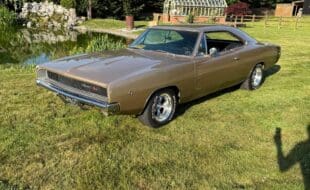We look back at a brace of special GM offerings from the early Eighties that are increasingly rare to find in such original or unmolested condition mechanically – partly due to their cutting-edge technology (for the time!) which are commonly either removed or bypassed…
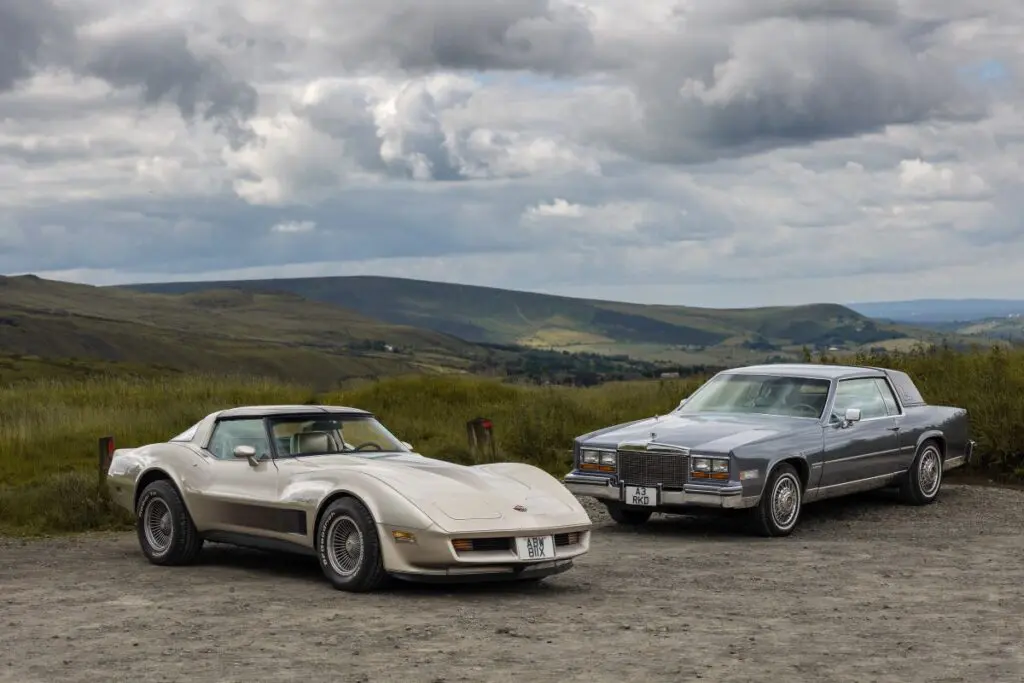
Words: Ben Klemenzson Photography: Gary Chapman
Growing up as a kid in the Eighties I had a particular fascination with American cars of the period, even going so far as to write off for brochures from American manufacturers and often receiving them by return post. Pretty much all of those I still have to this day! Back in ’85/’86 when I was 16/17 I spent a year in a high school in Raleigh, North Carolina and was in American car heaven for the duration. Cars like the ones featured on these pages were still relatively new, but there were still plenty of full-size cars from the Seventies (even cars from the Sixties, believe it or not) still in daily use and parked on the roads.
So, when I saw Steve Waring’s 1981 Cadillac at the Stars & Stripes show a few years back, I suddenly felt as though I’d fallen down a worm hole back to that time in my life. Everyone knows about Cadillac’s famous one-year-only 8-6-4 engine (a variable displacement set-up, that was meant to run the engine on four, six or eight cylinders, depending on load and theoretically save fuel) but how many have actually seen a fully functioning one? Not me, so I was intrigued and trotted out all the usual, stereotypical criticisms of the engine that I’d read and heard of in the past.
Enjoy more Classic American reading in the monthly magazine.
Click here to subscribe & save.
Steve cheerfully batted away my proclamations of the Eldorado’s 8-6-4 engine as being ‘problematic’ as rubbish and even went on to mention that he had a 1982 Corvette Collector’s edition with the infamous Crossfire engine. “Are you mad?” I asked. But cool as a cucumber, Steve explained that as an electronics engineer, he had effectively become a horse-whisperer to these cars, which had suffered from the reputational damage caused by the adoption of early electronics technology back then, that was perhaps ahead of its time, but not yet sufficiently refined (or understood or welcomed) to be embraced by the American car buying public of the time.
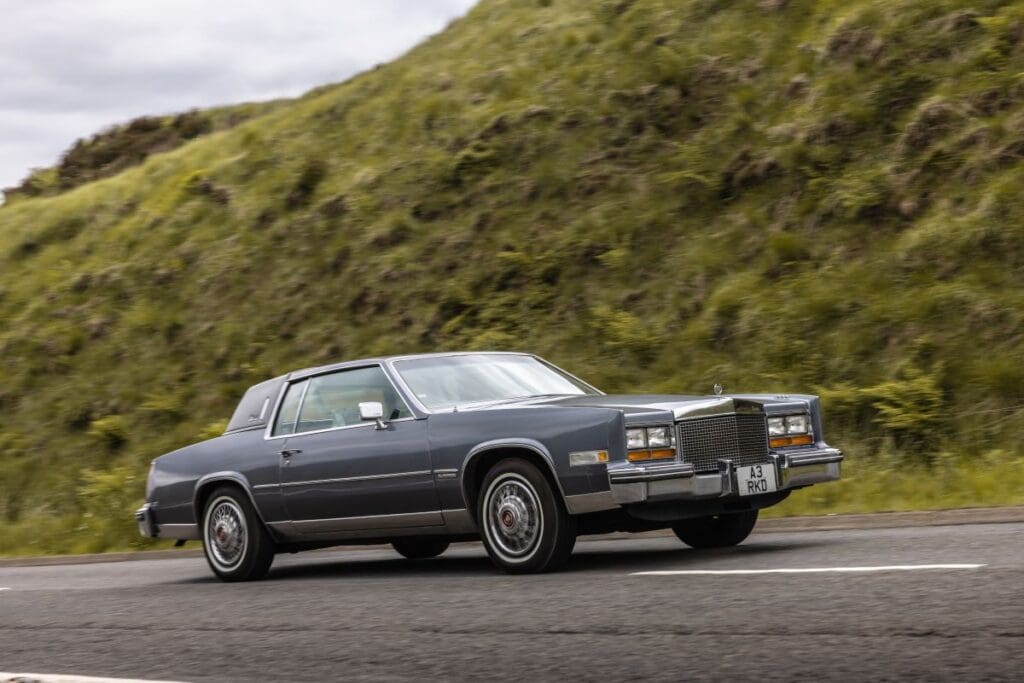
Steve’s American automotive Odyssey started in 1995 with a 1982 Pontiac Trans Am, which was followed by a Ford Bronco II of which he says: “the worst car I’ve ever owned!”. Luckily, he persevered, and a 1987 Fox-body Mustang GT 5.0 followed and after that a Jeep Cherokee with the bulletproof 4.0-litre straight-six engine. There then followed a UK-spec Ford Probe and then a 1983 Cadillac Eldorado, with the 4.1-litre V8 (speaking of problematic engines!) which he restored. In many ways, it must have been this earlier Eldorado which whetted Steve’s appetite for this model/era of Cadillac as it was most definitely a ‘project’. Found in Ireland in the early Noughties, it was hopelessly rusty and was fondly nicknamed ‘the Brown Bomber’. He smoked around it for several years before the Cadillac shown on these pages came up for sale locally 18 years ago. He immediately jumped at the chance to acquire it, despite reading the horrific things that were written on the internet about its engine. Ominously, the new Eldorado came with a set of spare ECUs!
Ironically, GM had always used Oldsmobile as the division to ‘showcase’ its technology, but for some reason in 1981 they decided to throw caution to the wind and just bypass this safety route (generally speaking, Oldsmobile was used to trial new technology, so that if it wasn’t a success, GM hadn’t tarnished the most important brand, Cadillac) rolling out the 8-6-4 engine (which was a 368cu in Oldsmobile sourced engine) in a blaze of publicity and TV ads. However, it was a one-year-only mistake and Cadillac, realising the terrible publicity that these engines were garnering for the division, dropped the technology like a hot stone, so there was no second year for the 8-6-4 engine (although it was to continue to be offered on the down-low for professional vehicles).
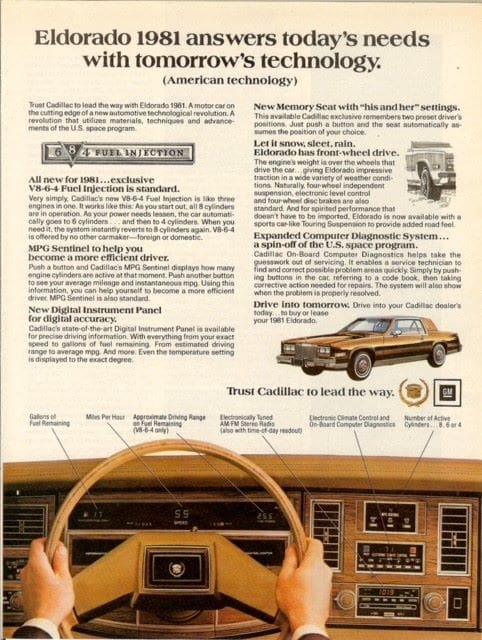
Enter the Eldorado
Our feature Cadillac is a 1981 Eldorado and was the third year from the dramatically downsized 1979 model which had ushered in a new era for what was still Cadillac’s halo ‘Personal Luxury car’. GM had started its downsizing programme in 1977 and by 1978 most of the GM range had been downsized, making the ’79 Eldorado one of the last cars to undergo the treatment and be put on a major diet – most pundits agree now that it was an incredibly successful restyle that was well received by the American car buying public, selling 67,436 cars (versus 49,816 of the last full size ’78s the year before).
But, at the time the fact the 1971-1978 Eldorados had been the most commercially successful versions of that model meant Cadillac had trepidations about how potential buyers would receive a downsized version. Luckily, the success of the 1976-1979 Cadillac Seville suggested those concerns were misplaced, as not only the smallest Cadillac in the range, but these were also the most expensive, yet had proven to be a massive sales success…
So, the designers went to work, shaving 20 inches off in total from the previous model year, making it 204 inches in overall length, shortening the wheelbase by 12 inches (so it now sat on a 114-inch wheelbase). Losing 1100lb meant the ’79 now weighed a dainty 3800lb compared to its predecessor. Of course, it wasn’t just all about losing the weight and girth; all that would be for naught, if the Cadillac designers couldn’t come up with a great-looking package, that featured all the luxuries, pace, space and grace that those traditional buyers had been used to and still desired.
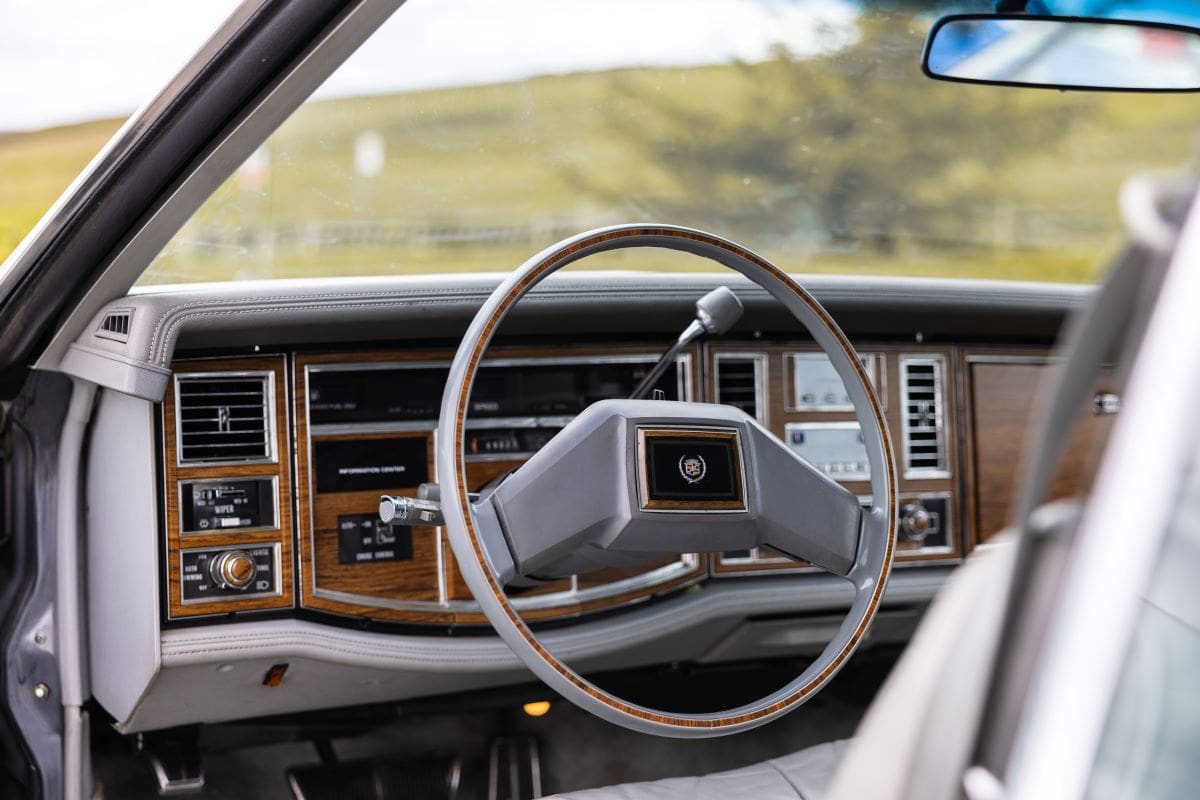
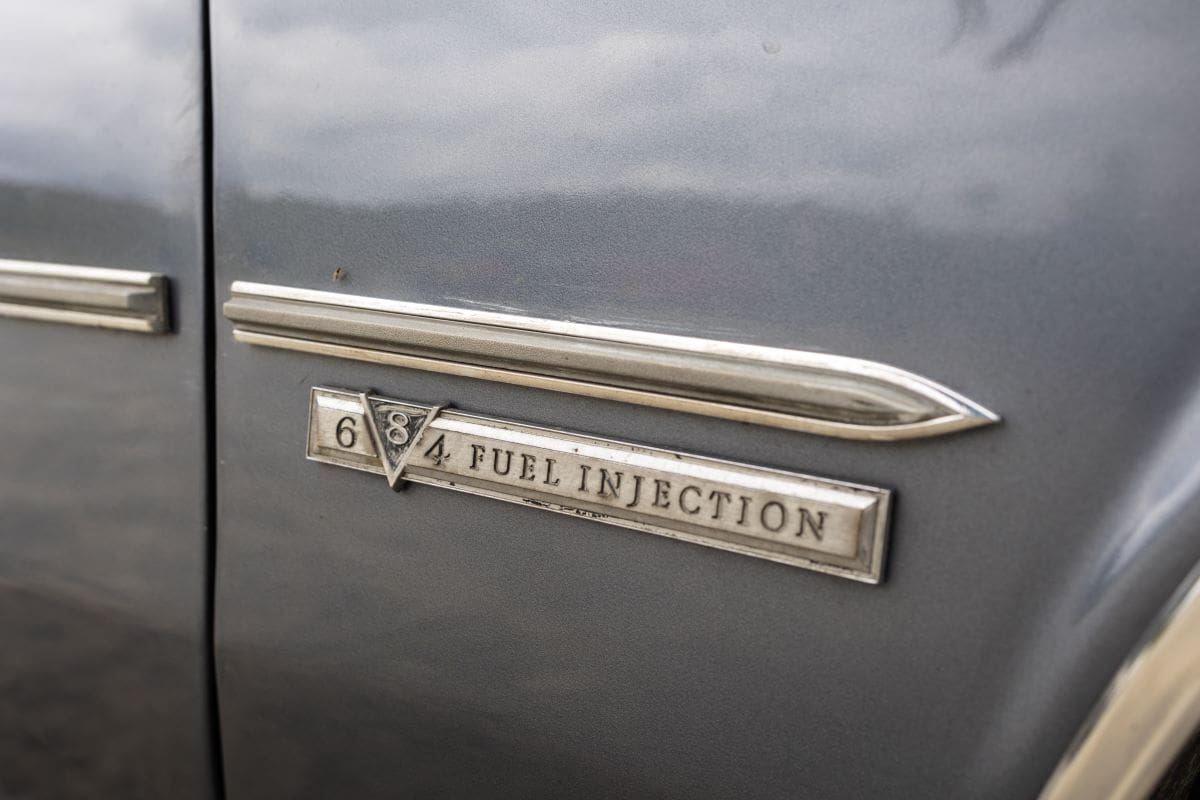
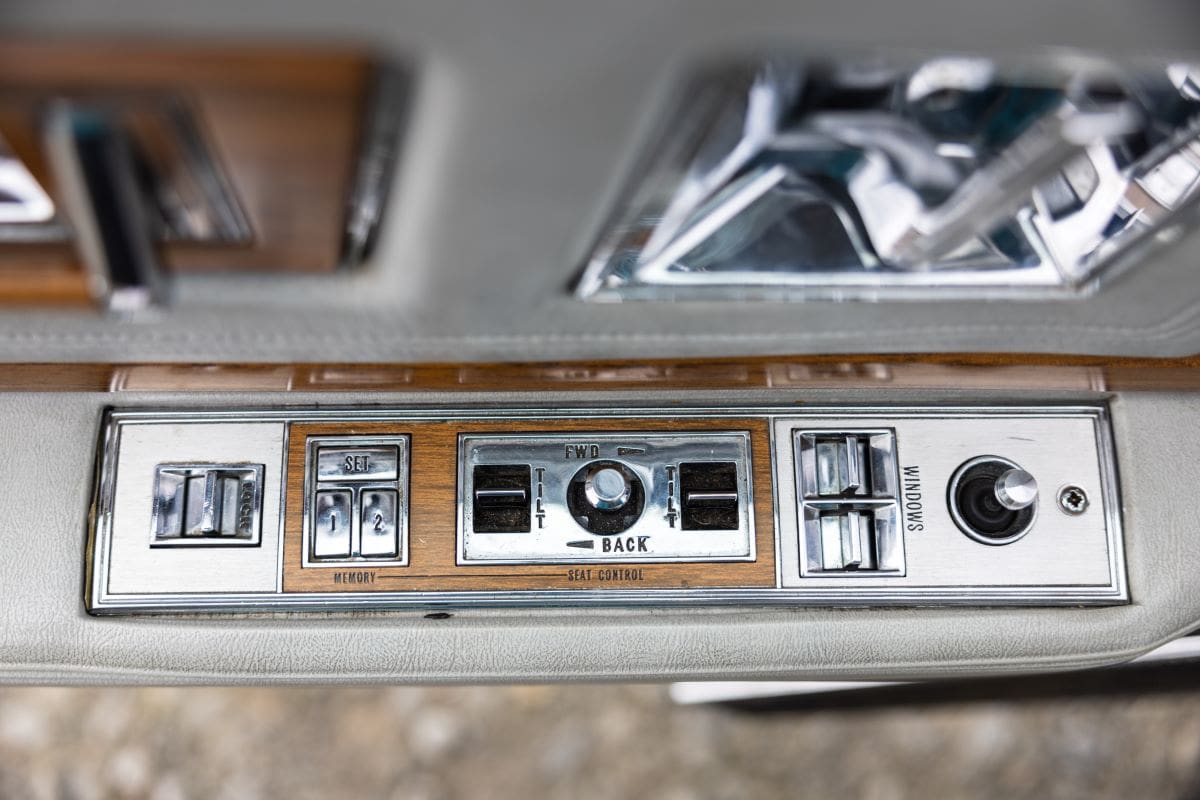
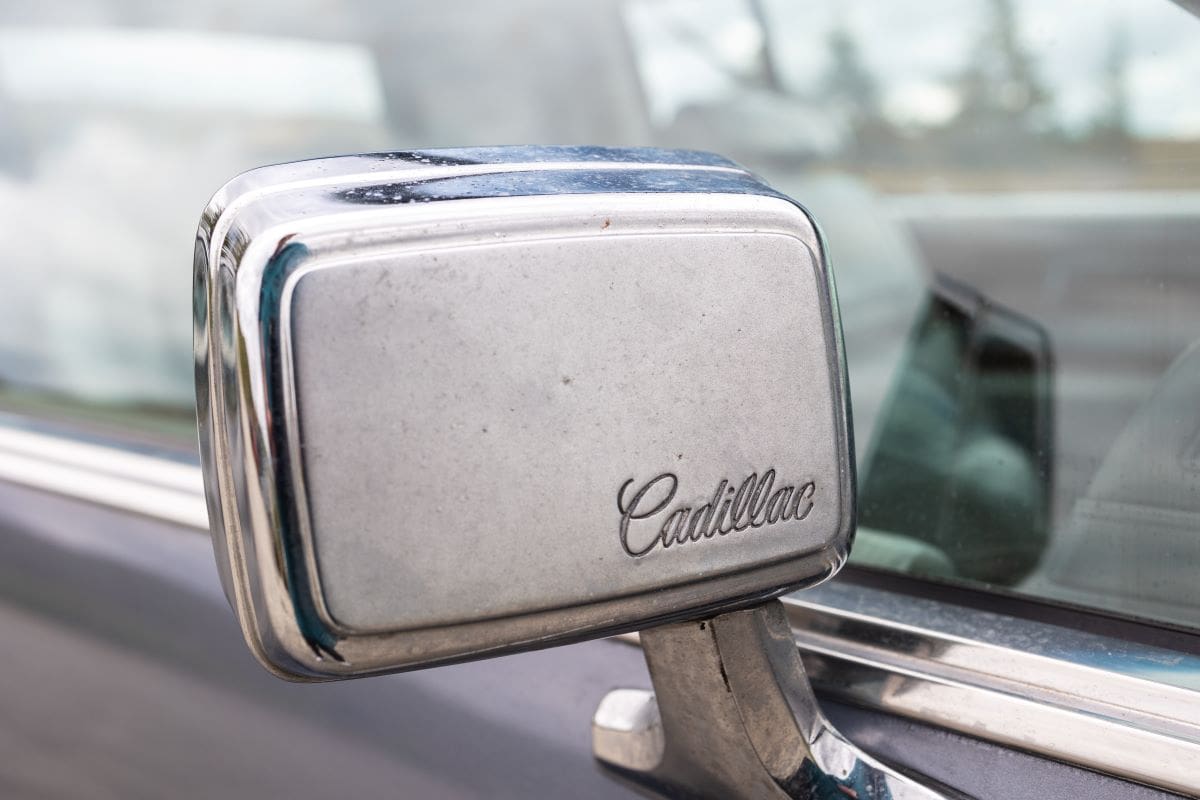
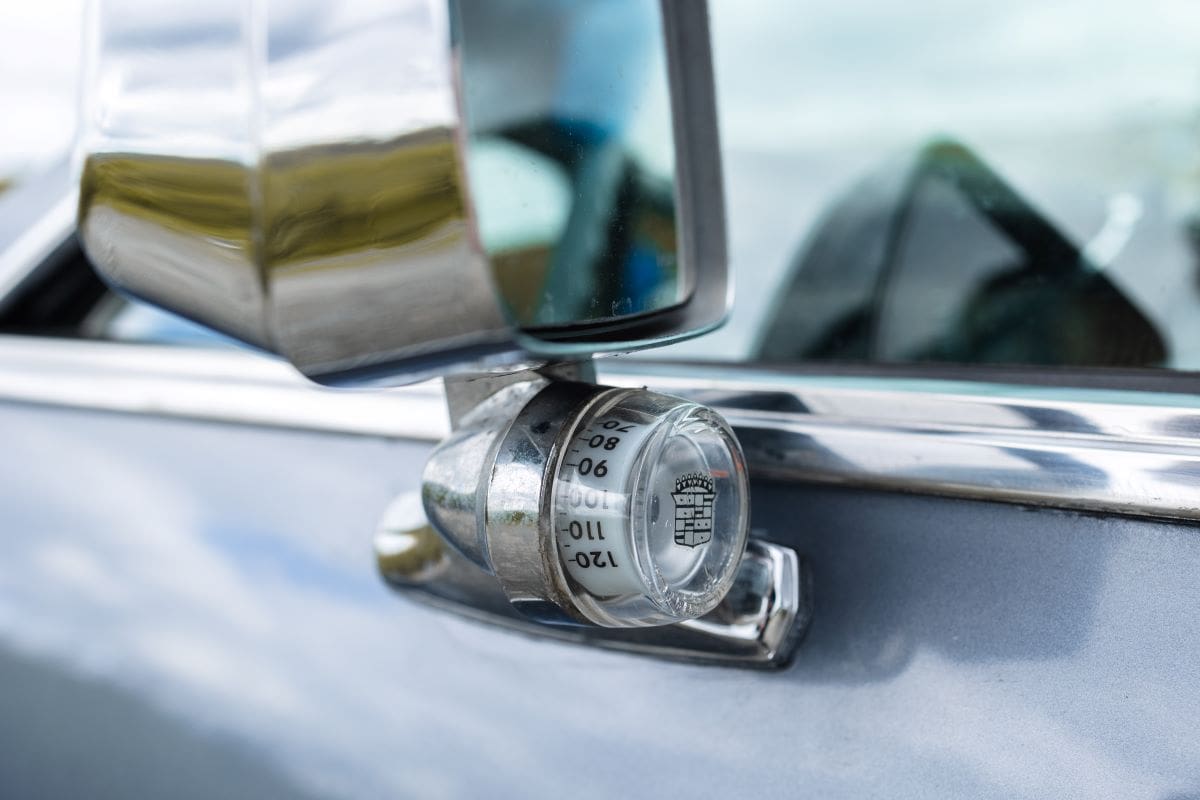
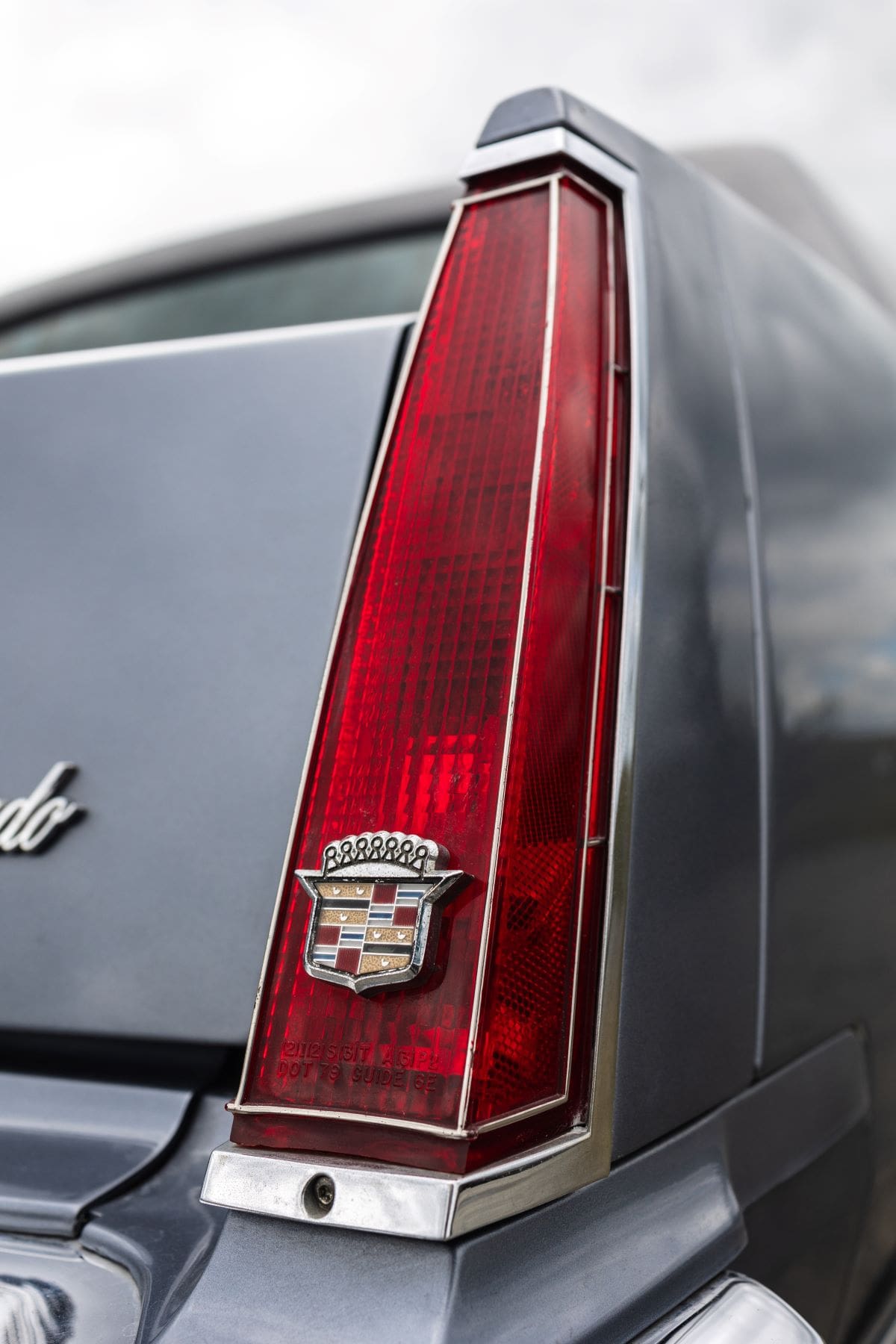
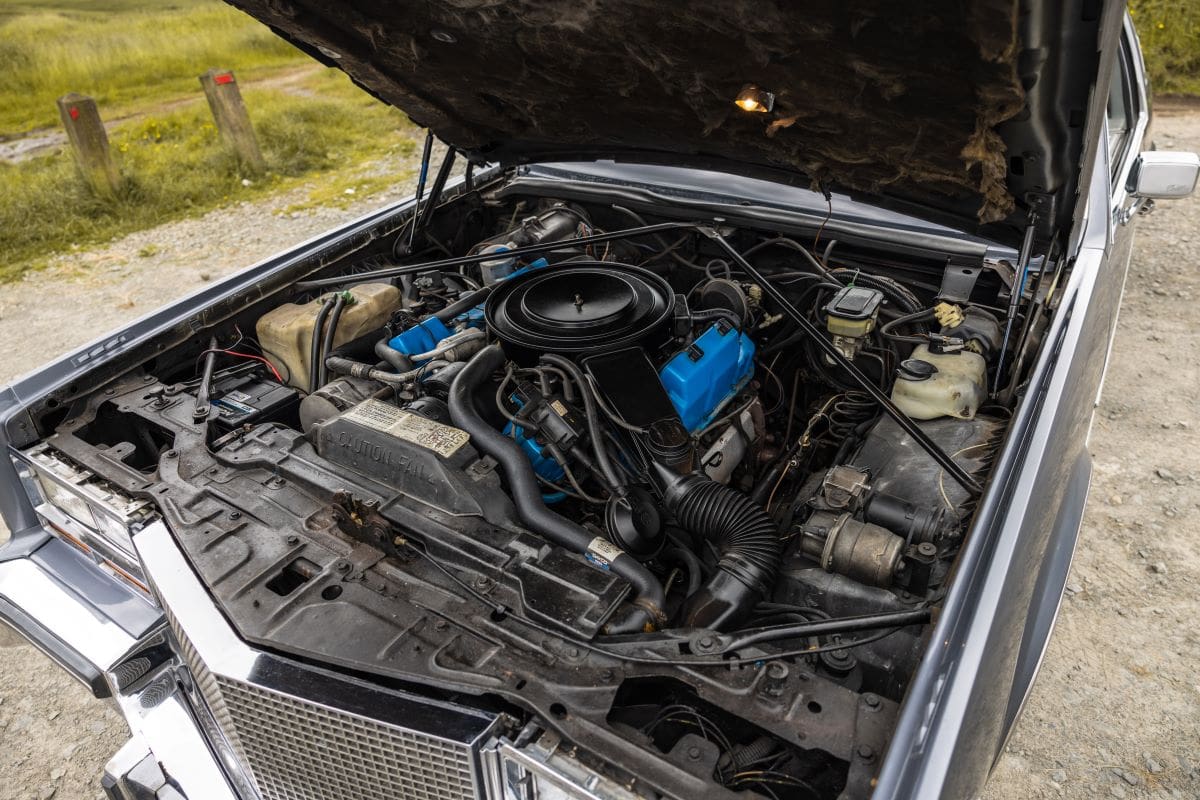

Cadillac designer Wayne Kady and his team seemed to take more inspiration from the original ’67 Eldorado, with its razor-sharp taut lines, long bonnet and short boot profile and ‘cathedral’ tail-lights. However, the redesign wasn’t just skin deep; there were some genuine engineering firsts for the new Eldo’, including front-wheel drive, all-round independent suspension, four-wheel disc brakes, fuel injection and electronic level control. There’s no denying that these early Eighties Eldorados were a styling hit, even if the engine options for them were somewhat challenging (in addition to the 8-6-4 engine, there was also the notorious Oldsmobile-sourced V8-diesel available, which that year was standard in the Seville).
Steve reckons (and we’ve heard this before) that American car owners could be a bit lackadaisical about changing their engine oil regularly enough and that’s why soon these engines developed a reputation for being problematic. Whoever ordered Steve’s Eldorado from new must have looked after it, as it hails from Scarborough, a suburb of Toronto in Ontario, Canada. Apart from getting the engine running right, Steve also undertook a respray of the car, using a Honda colour (Crescent Silver) as it wasn’t possible to replicate the original formula. He explains: “I never knew this about the paints that GM used on their cars from the early Sixties through to the Eighties and Nineties, but the Firemist paints use titanium dioxide flashed translucent borosilicate glass flakes. Like the aluminised polyester flakes, these are both refractive and reflective.” Options on the Cadillac include Twilight Sentinel, self-levelling suspension and opera lamps, Climate Control, and ‘Eco Minder’ fuel computer to let you know what mpg you were doing. While painting the car, Steve found build sheets in the headlining and on top of the fuel tank.
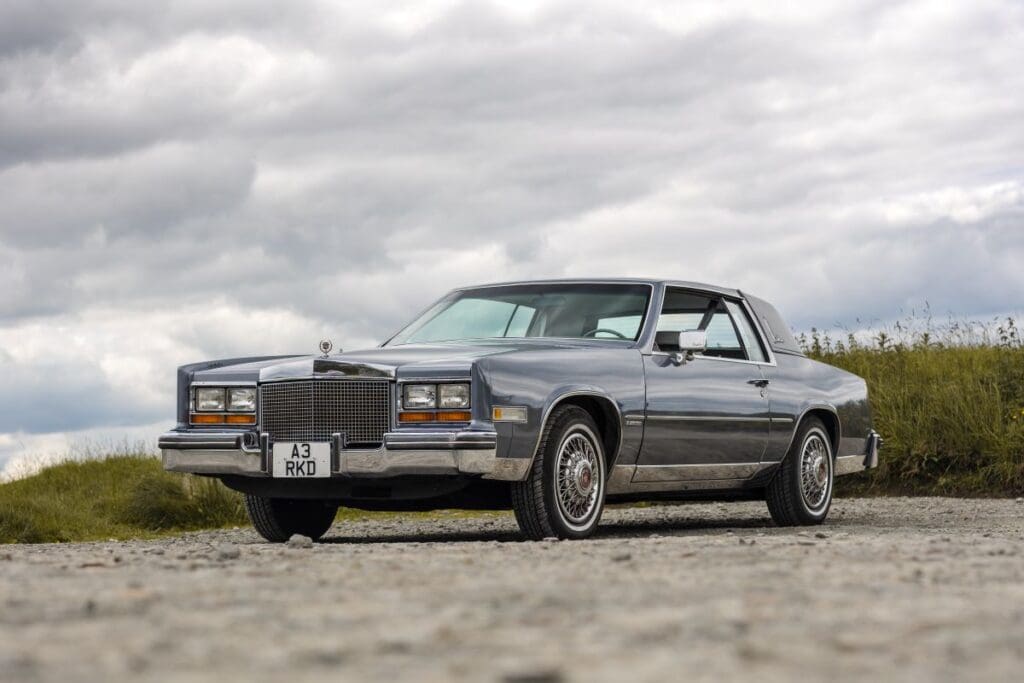
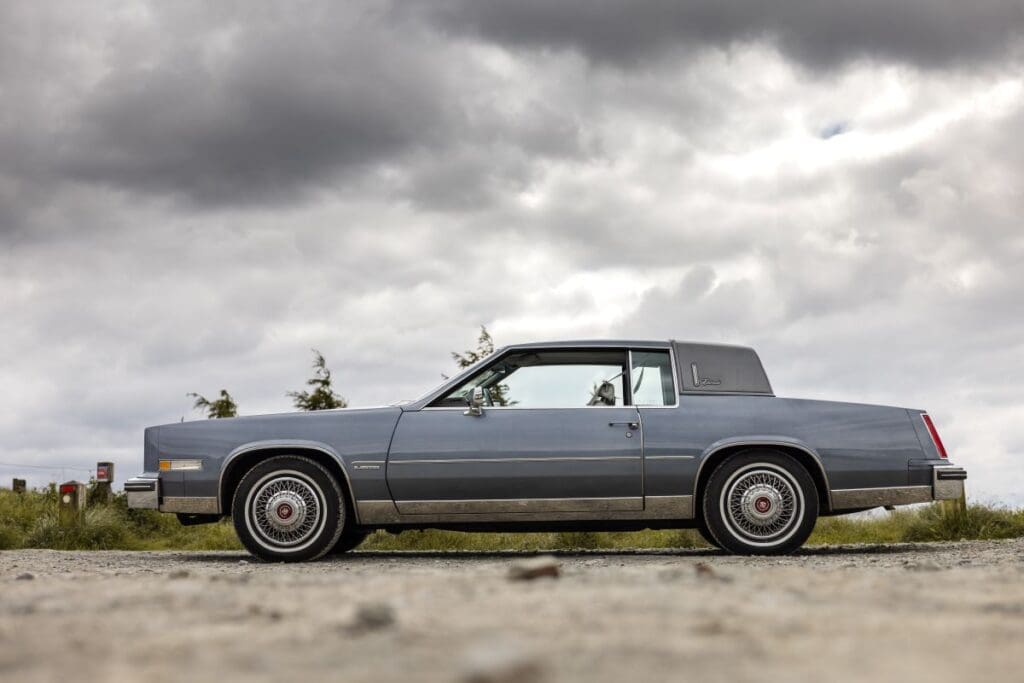
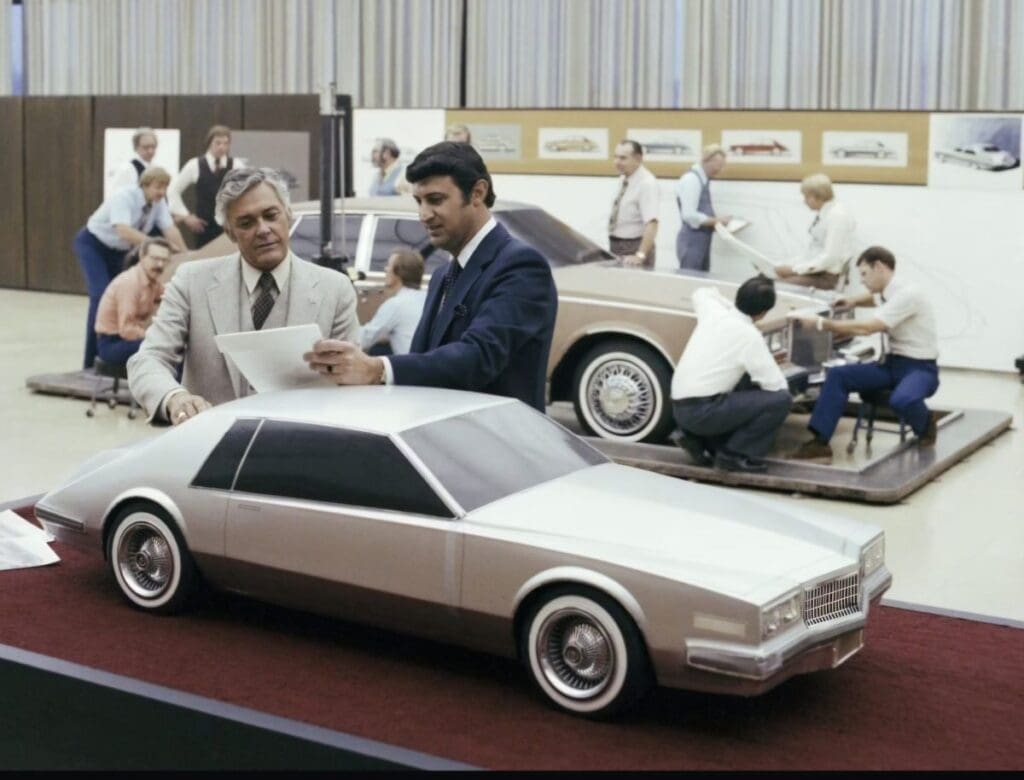
My other car’s a Corvette!
Steve’s Corvette is just as special as the Cadillac in that it is the last year of the C3 model (which was launched in 1968) and as such, Chevrolet released a special Collector’s Edition, of which Steve’s is one of 6759 built that year. So how did the bow tie brigade decide to blow out the C3 with a bang? Well, Chevrolet’s special offering (costing $4k) featured Silver Beige Metallic paint (again with that unique metalflake paint) a one year-only rear opening frameless hatch/rear window and turbine wheels reminiscent of the ’67 Sting Ray’s, plus bronze-coloured T-Tops. Inside there was a silver-beige metallic leather interior (yes, really!), deep shag pile carpet and lots and lots of decals, badges and emblems.
Under the hood sat a regular 200bhp Chevy small block 350, but now with the ‘Crossfire’ set-up, which essentially was a computer-controlled twin throttle body early fuel-injection system, that like Cadillac’s 8-6-4 engine, has a ‘colourful’ not terribly positive reputation among American automotive enthusiasts. The 1982 Corvette was not available as a stick shift, so they were all automatic. Standard equipment included power-brakes, -steering and -windows, cornering lamps, retractable sealed beam headlamps and a leather-wrapped steering wheel.
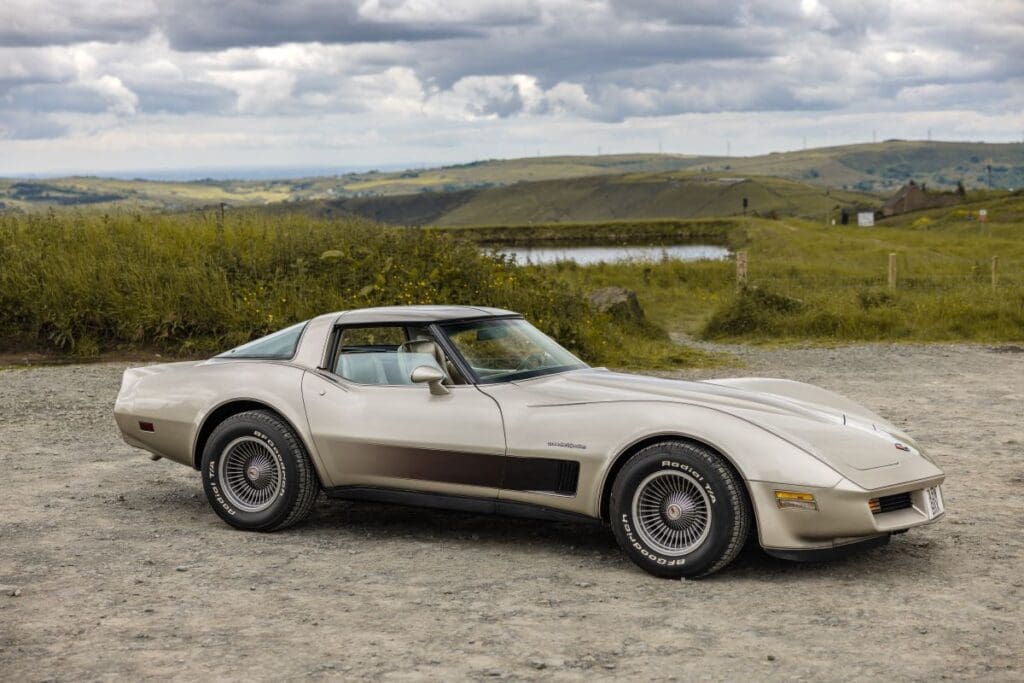
Chevrolet sold 25,407 Corvettes in the final year of C3 production, of which 6759 were Collector’s Editions. It was a drop of more than half the previous year’s production (40,606) but that was presumably because Corvette buyers were holding their horses until the next generation of Corvette, the C4, was released… Famously there were no Corvettes at all for the 1983 model year (well, those that were produced were for tests, were not EPA certified and were destroyed).
Steve acquired his Corvette in 2018 and was attracted to it by the fact he’d always liked C3s, plus it had an overdrive, was the first year of fuel injection and that it came from a dry state. Although a good sound car which had a correct respray (that’s a £10k job at least!), it didn’t run great and was a bit lumpy. He sorted this out by replacing the injectors and giving the car a mechanical overhaul and now it runs sweet as a nut. “I don’t really think anyone had gone through it mechanically since it was new and once I’d done that, it was a great improvement.”
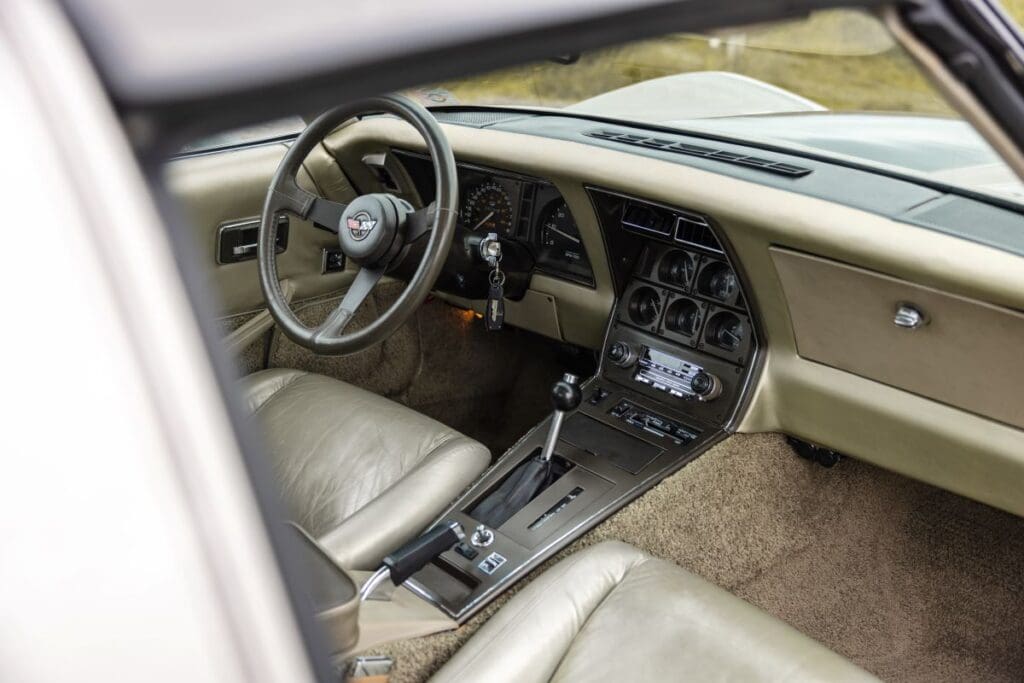
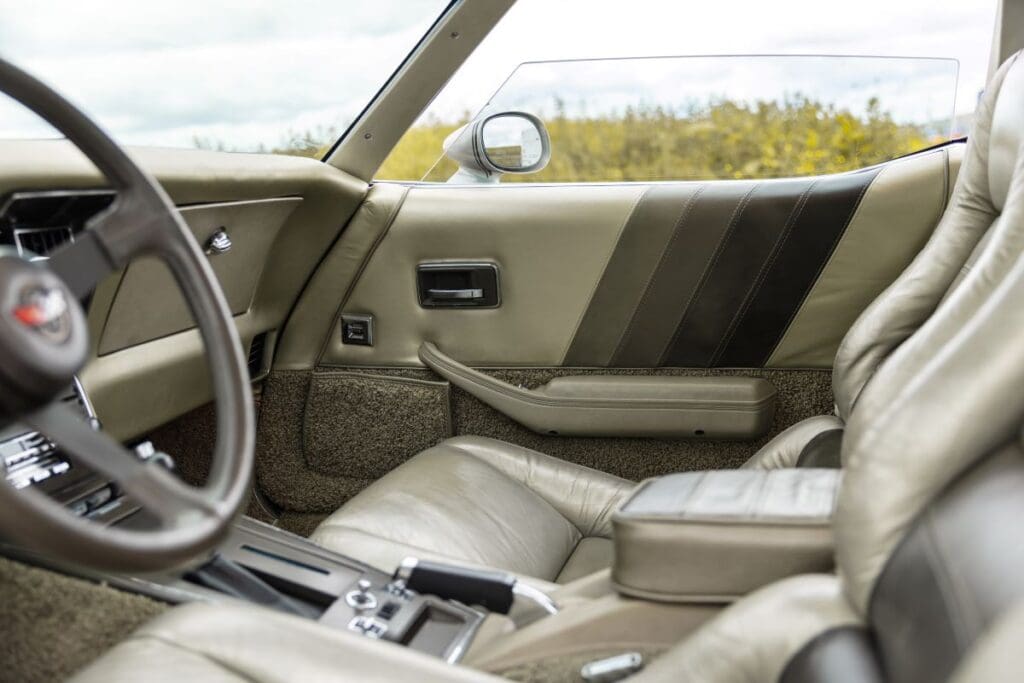
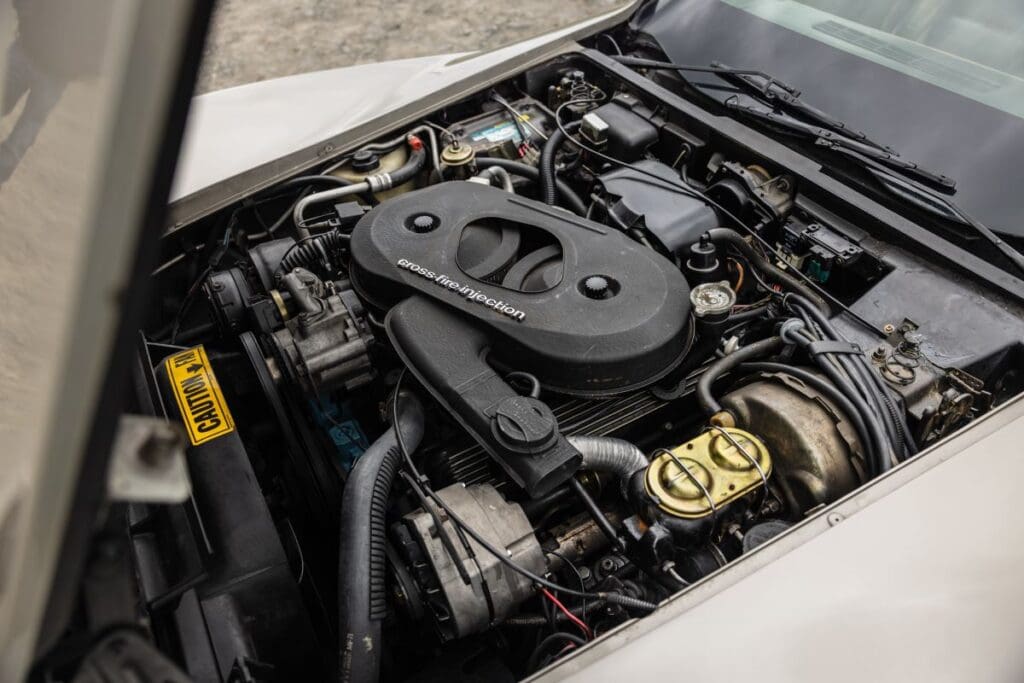
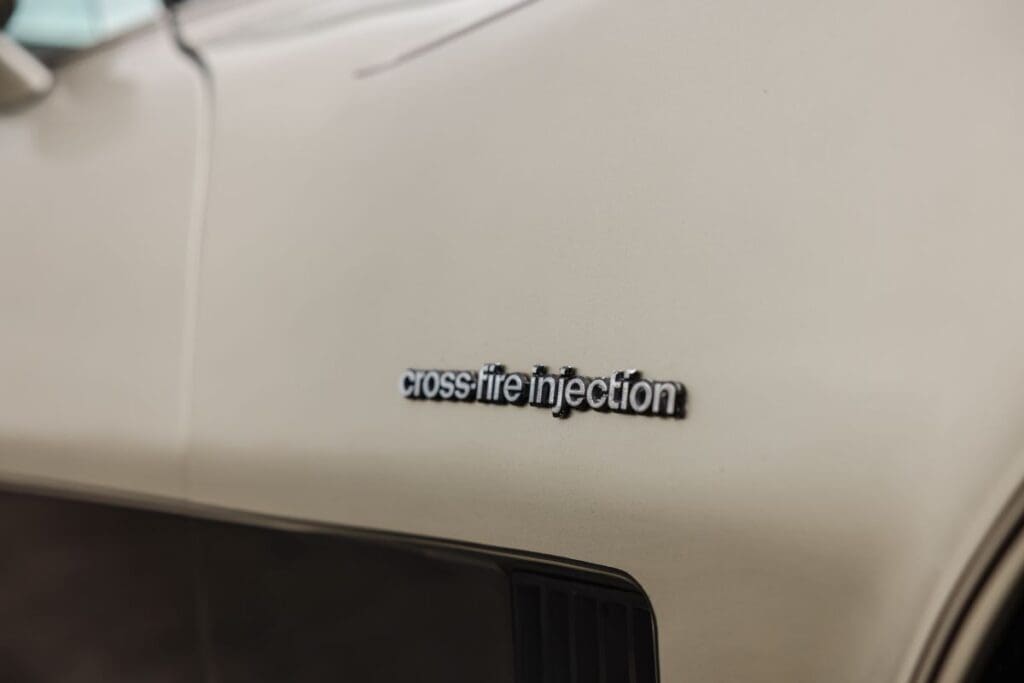
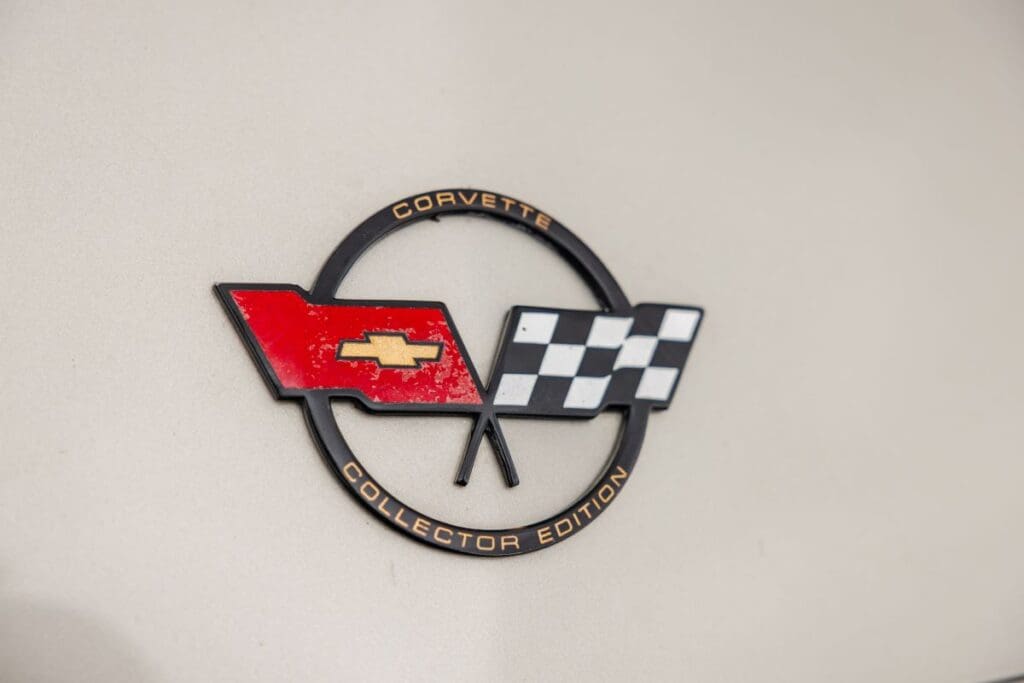
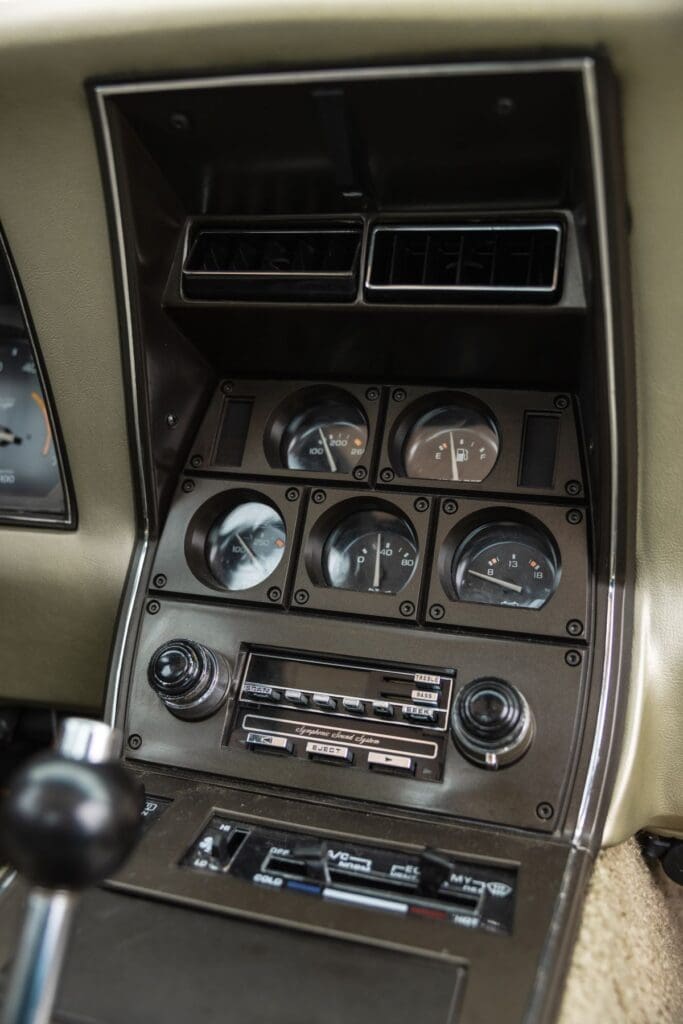
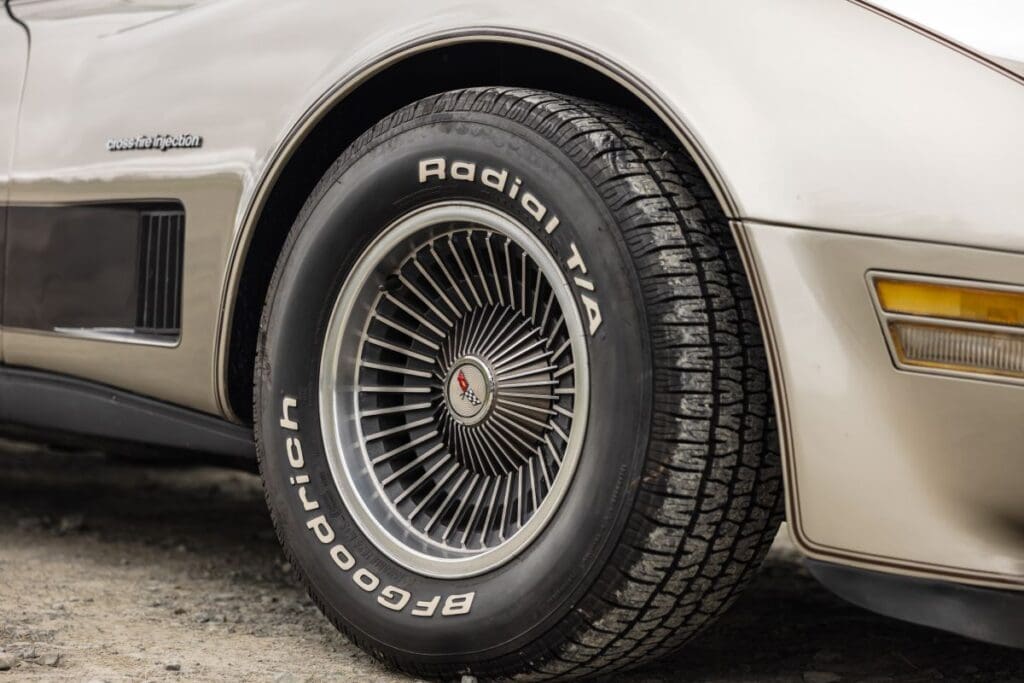

Steve is a long-time member of the American Auto Club Northwest, as well as the Classic Corvette Club UK (North-West division) plus he’s also on the committee of his local classic car club, the Tame Valley Vintage and Classic Car Club. They’re both very different cars; a car for every occasion effectively. The Corvette is sporty, while the Cadillac is cossetted and great for relaxed, leisurely driving. Steve uses the cars regularly but took the Corvette on the Isle of Man American Extravaganza a couple of years ago and used the Cadillac for background shots when they were filming episodes of The Crown in Manchester (substituting for New York in the Eighties!). What he has found is that in removing the catalytic converters (don’t tell Sadiq Khan!), advancing the timing slightly and running them on 95 octane/premium fuel they run really, really well and he reckons the Eldorado (and the Corvette) can achieve 26mpg on a steady run. Life in the Eighties? Simpler, happier times like the cars – what’s not to like?!
